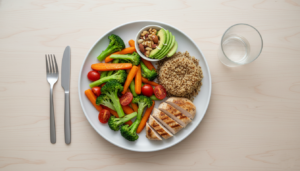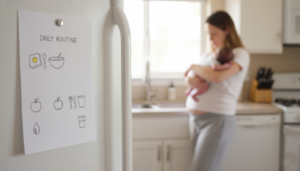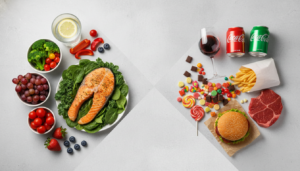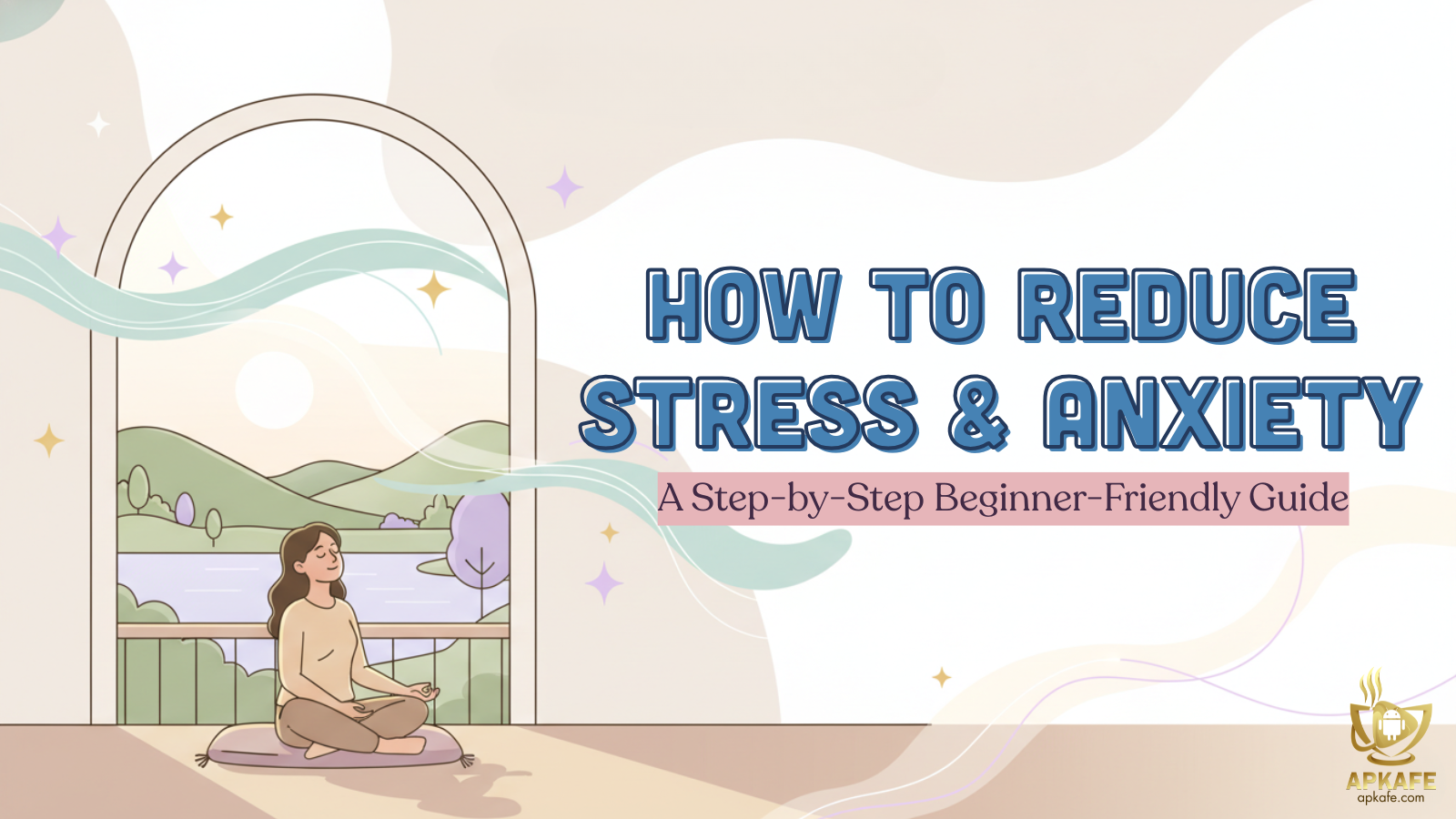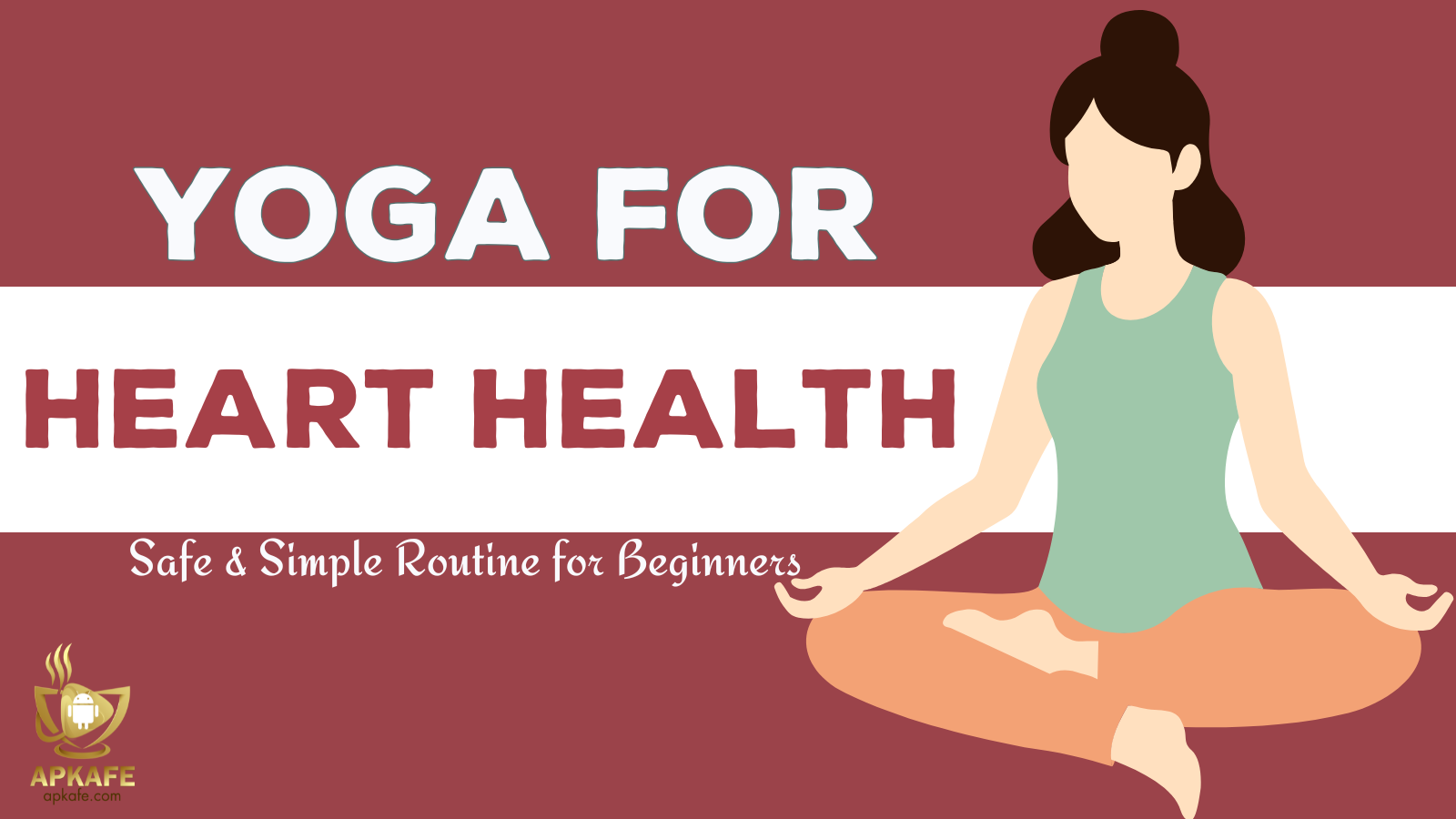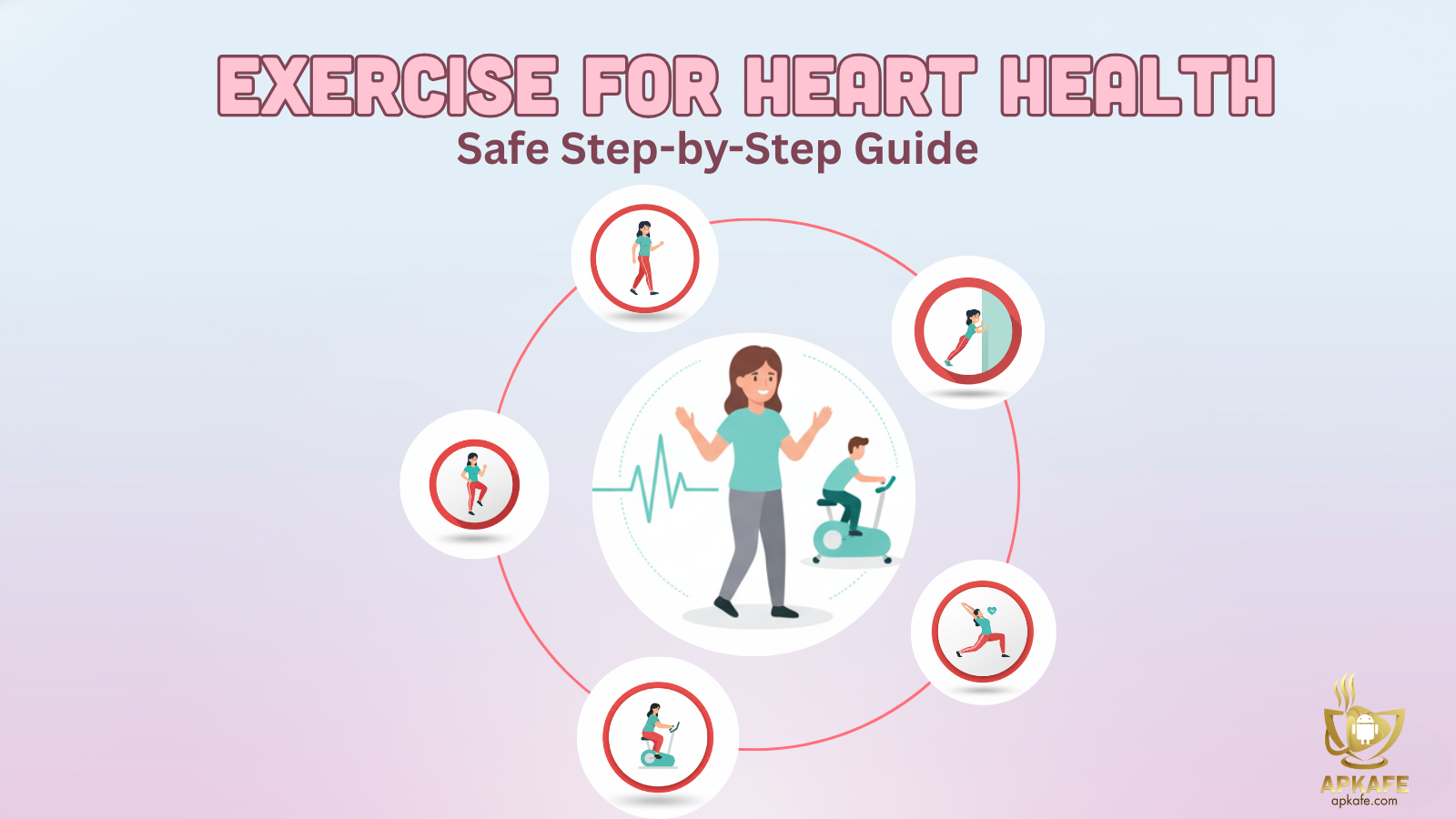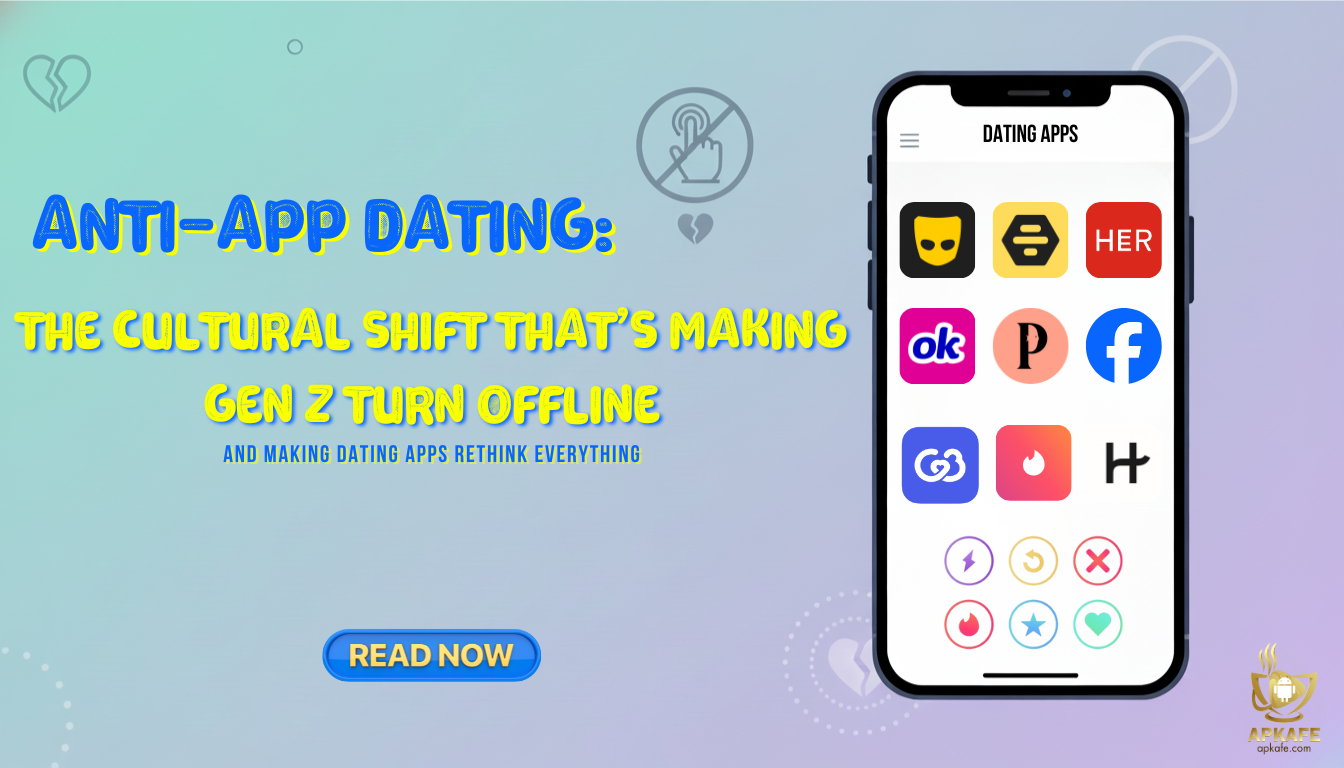Postpartum diet plan to lose weight safely (without harming your recovery or milk supply)
The first months after birth are intense: broken sleep, a healing body, constant feeding and soothing, plus pressure to “bounce back.” Wanting your clothes to fit again and your belly to shrink is normal – but your body has just done something huge. This postpartum diet plan to lose weight puts recovery first and weight loss second. You’ll get a simple daily structure, practical food ideas, a 7-day meal-planning method, and tips for using apps like MyFitnessPal, Lifesum, and Noom in a calm, non-obsessive way. By the end, you’ll know when it’s safe to start, how to build a healthy postpartum plate that fits into a realistic postpartum diet plan to lose weight, and how to protect your privacy when tracking your health.
Before you start: postpartum recovery & realistic weight loss expectations

What happens to your body after birth (0–12+ weeks)?
Right after delivery you lose the baby, placenta, and a lot of fluid, but your body is still healing. Your uterus shrinks back down, bleeding (lochia) may last weeks, stitches or a C-section incision need care, and hormones swing. On top of that, sleep loss and learning to care for a newborn change your appetite and cravings.
In this early window, scale changes mostly reflect fluid shifts and recovery, not true fat loss. The priority here is eating enough, staying hydrated, and resting, not dieting hard.
When is it safe to actively focus on weight loss?
For most people, doctors recommend waiting until the routine postpartum check (often around 4–6 weeks) before starting any intentional weight loss. If you had a C-section, heavy bleeding, high blood pressure, diabetes, or other complications, you may need extra time or a personalized plan.
If you still have strong pain, very low energy, wound issues, dizziness, or overwhelming mood symptoms, focus on basic nourishment and rest until your provider gives the green light.
Breastfeeding, hormones & weight loss: myths vs reality
“Breastfeeding melts the weight off” is only partly true. Breastfeeding usually needs about 330–400 extra calories a day, and bodies respond differently: some parents lose weight easily, others hold on to fat until they wean. Both are normal.
Aggressive calorie cuts while breastfeeding can increase fatigue and may affect supply. As a general rule, aim for gradual loss (around 1 lb / 0.5 kg per week at most) once your provider says it’s safe, and build that from balanced meals instead of tiny portions.
Set safe postpartum weight loss goals (without punishing your body)
What is a realistic amount of weight to lose – and how fast?
Slow, steady weight loss is usually safer and easier to maintain than big drops. After you’re medically cleared, a gentle target for many postpartum women – especially when breastfeeding – is up to about 1 lb (0.5 kg) per week.
Rather than weighing yourself every day and chasing a specific number, watch for broader signs of progress: more energy, less bloating, more stable moods, and clothes gradually fitting more comfortably. Plateaus are common in this phase and don’t mean you’ve failed.
How to define your “why” and boundaries (no crash diets, no guilt)
Your “why” should go beyond “fit my pre-baby jeans.” Maybe you want to climb stairs without gasping, play with your child without back pain, or lower your long-term health risks.
Set clear boundaries for your post pregnancy diet plan for safe weight loss:
- No skipping main meals to “save calories”
- No extreme cleanses or unregulated fat-burning pills/teas
- 1–2 non-negotiable habits (for example: “three meals a day” or “water before coffee”)
When a day goes off track, you simply reset at the next meal instead of waiting for next week.
Build a healthy postpartum plate (simple formula)
If you can picture your plate, you don’t need a complicated diet.
The plate formula
Use a quick visual rule for most meals:
- ½ plate: vegetables and/or fruits
- ¼ plate: protein (eggs, beans, tofu, fish, poultry, yogurt, etc.)
- ¼ plate: whole grains or starches (oats, brown rice, whole-grain bread, potatoes)
- + healthy fats: nuts, seeds, avocado, olive oil
Examples: oatmeal with nuts and fruit; a wrap with chicken and salad; salmon with rice and veggies. Frozen vegetables, pre-washed greens, and rotisserie chicken are useful shortcuts.
Hydration & digestion
Constipation is common after birth. Drinking enough water and adding fiber from fruits, vegetables, whole grains, and legumes gradually can make things more comfortable. Keep a bottle by your feeding or pumping spot, or use a water reminder app to nudge you to drink regularly, and increase fiber slowly to avoid gas and bloating
Smart treats & emotional eating
You don’t have to “ban” treats. Plan small portions, pair them with some protein, and actually sit down to enjoy them. If you notice a pattern – like always snacking heavily late at night when you’re exhausted – experiment with one non-food comfort, such as texting a friend, stretching, or going to bed earlier when possible.
Step-by-step daily postpartum diet plan to lose weight
A gentle day structure you can repeat, skip, or tweak – no all-or-nothing restarts.
Step 1: Morning reset (hydration, gentle breakfast, quick check-in)
Drink water before coffee. If your provider has cleared light movement, add a few minutes of stretching or deep breathing. Eat a balanced breakfast within a couple of hours of waking – for example, oats with nuts and fruit, or eggs with whole-grain toast and vegetables. This helps stabilize blood sugar and reduces mid-day “crash and binge” cycles.
If you like tracking, log breakfast and water in your preferred app, then put your phone down.
Step 2: Late morning & lunch – anchor meals that stabilize energy
Mid-morning, check in with your hunger and energy. If you’re hungry, have a snack with protein and fiber (fruit + nuts, yogurt, hummus + crackers). At lunch, use the plate formula: half veggies/fruit, quarter protein, quarter whole grains, plus some healthy fat.
If you’re tracking, log lunch as you eat rather than trying to remember it hours later. This “anchor meal” helps prevent evening overeating.
Step 3: Afternoon cravings & snack strategy
Afternoons are prime time for sugar cravings, especially with broken sleep. Before reaching for sweets, drink some water and ask, “Have I eaten enough today?” Try a planned snack with protein and fiber (apple with peanut butter, carrots with hummus) and add a small sweet if you still want it.
If you use an app, a quick look at your day can show whether you’re under-eating earlier and need to shift more food to morning or lunch.
Step 4: Dinner – simple, satisfying, family-friendly
Dinner can be basic and still support your postpartum diet plan. One-pan or slow-cooker meals work well: bean chili with vegetables, stir-fry with frozen veg and chicken or tofu, sheet-pan salmon with potatoes and broccoli. Use the same plate pattern and let others add extra sides if they need more.
Cook extra when you can so the next day’s lunch is already ready.
Step 5: Evening wind-down, reflection & tomorrow’s prep
At night, take three minutes to review: Did I eat enough? Drink enough? Move at all? Rest at all? Jot down one win, one challenge, and one tiny goal for tomorrow.
If evening snacking is a struggle, try moving part of your dinner or snack earlier and pairing screen time with a non-food habit. Your reset point is always the next meal – not a harsh “new start” tomorrow.
Creating Your 7-Day Postpartum Meal Plan
Plan once, repeat often – your meal plan should lighten your load, not add to it, and it should fit into a realistic postpartum diet plan to lose weight safely.
A 7-day postpartum meal plan doesn’t need 21 unique recipes. Think in building blocks: a handful of breakfasts, snacks, and mix-and-match lunches/dinners you recycle across the week. That way, you support healing and gentle weight loss while avoiding constant “What do I eat now?” decisions.
Step 1: Choose your “core” breakfasts and snacks
Pick 2–3 breakfasts and 3–4 snacks that fit the plate formula and your reality (can you eat them one-handed, quickly, or prep ahead?). For example:
Breakfasts:
- Overnight oats with milk/yogurt, chia seeds, and fruit
- Eggs with whole-grain toast and avocado
- Greek yogurt with granola and berries
Snacks:
- Apple + peanut butter
- Carrot sticks + hummus
- Handful of nuts + a piece of fruit
- Whole-grain crackers + cheese
Rotate these so mornings and snack times are almost automatic.
Step 2: Build mix-and-match lunches and dinners
Choose 3–4 simple lunches and 3–4 dinners that match the plate pattern and suit your household. For example:
Lunch ideas:
- Whole-grain wrap with chicken, hummus, and salad mix
- Leftover sheet-pan veggies + protein + rice
- Lentil or bean soup with whole-grain toast
Dinner ideas:
- Sheet-pan salmon, potatoes, and mixed vegetables
- Turkey or bean chili with veg, over rice or baked potatoes
- Stir-fry with frozen veggies and tofu/chicken over brown rice
Cook once, eat twice: plan leftovers from dinner as the next day’s lunch whenever possible.
Step 3: Map your week in 10–15 minutes
Create a simple 7-day grid in a notebook or notes app and plug your building blocks into each day. For example:
- Monday: Overnight oats / leftover chili / sheet-pan salmon / apple + yogurt
- Tuesday: Eggs + toast / chicken wrap / stir-fry / nuts + fruit + veg + hummus
- Wednesday: Yogurt + granola / leftover stir-fry / bean chili / crackers + cheese
Repeat and shuffle these combos for Thu–Sun. Mark 1–2 extra busy days and assign your easiest meals (leftovers, freezer meals) there. Use this mini-plan as your shopping list or to build an online grocery order.
How your 7-day plan supports gentle weight loss
This kind of postpartum diet plan to lose weight works because it’s simple and repeatable:
- Balanced meals reduce all-day grazing and late-night binges
- Regular eating supports energy, mood, and, if breastfeeding, milk production
- Predictable meals make it easy to spot patterns in apps like MyFitnessPal, Lifesum, or Noom – without tracking forever
You can adjust portions, swap meals between days, and use your 3-minute nightly check-in to tweak next week (more snacks, simpler dinners, extra leftovers, etc.).
Foods to limit or avoid while healing & breastfeeding
To protect your recovery and your baby, focus on a few key things.
High-mercury fish, herbs/supplements & leftovers
Avoid high-mercury fish (such as shark, swordfish, king mackerel) and choose lower-mercury options like salmon or sardines according to local guidelines. Be careful with herbal teas or supplements that promise fast weight loss or more milk – many haven’t been well studied. Keep food safe by refrigerating leftovers promptly, reheating thoroughly, and avoiding undercooked meat or eggs.
Ultra-processed foods, sugary drinks & alcohol
Ultra-processed snacks and sugary drinks aren’t “banned,” but large amounts can worsen energy and mood swings. Gradually shift toward less processed choices and reduce sweet drinks step by step. If you drink alcohol while breastfeeding, follow current medical guidance on how much and how to time feed or express milk, and ask your provider if you’re uncertain.
How to use apps like MyFitnessPal, Lifesum & Noom without obsessing
Let apps support you – not stress you – and use them as tools to make your postpartum diet plan to lose weight easier to follow, not stricter.
Choosing the right app for your postpartum season
Apps such as MyFitnessPal, Lifesum and Noom can help you notice patterns in your eating and activity, but their default settings may suggest aggressive calorie cuts that aren’t suitable postpartum. A combined approach – nutrition, movement, and support – generally works better than tracking alone, especially when you’re following a gentle postpartum diet plan to lose weight safely.
Pick one app and commit to just a few features: maybe logging 1–2 meals, tracking water, or counting steps. Adjust any calorie targets to something gentler, especially if breastfeeding, and raise them if you feel constantly hungry, exhausted, or notice supply issues.
Privacy & data protection checklist for health & diet apps
Diet and health apps can collect sensitive details like your weight, food logs, health conditions, and location. To protect your data:
- Review permissions in your phone settings (camera, contacts, location, health data)
- Skim the app’s privacy summary to see how your information is used and shared
- Use strong, unique passwords and two-factor authentication when available
- Be mindful about sharing weight, photos, or location in app communities
- Learn where to download and delete your data so you can leave when you choose
- Recheck these settings every few months and uninstall apps you no longer use
Common postpartum diet pitfalls & how to fix them
You haven’t failed – these are normal traps.
Eating too little or skipping meals
Under-eating can make you exhausted, trigger evening binges, and may affect milk supply. Instead of cutting more, add a small meal or snack earlier in the day and use reminders tied to baby’s routine so you don’t “forget” to eat.
Emotional & stress eating
Food is an easy comfort when you’re overwhelmed. Try to notice when it happens (time and trigger) and add one extra coping tool: a short walk, deep breathing, journaling, or messaging a friend. A simple notes app or mood diary can help you spot patterns over time.
Plateaus & extreme diets
Weight plateaus are very common. Before turning to extreme diets or “detoxes,” adjust one small thing for a couple of weeks: slightly more walking, a higher-protein breakfast, or fewer sugary drinks. Avoid very low-calorie plans and unregulated products, especially while breastfeeding or dealing with health conditions.
Conclusion: give yourself time, fuel and kindness
A postpartum diet plan to lose weight should never feel like punishment. Your body has grown and delivered a whole human; it deserves time, fuel, and kindness, not crash diets or constant comparison.
If you focus on basics – balanced plates, enough fluids, gentle movement when cleared, and small daily habits like a 3-minute evening check-in – your weight will usually shift gradually as your recovery progresses. Apps such as MyFitnessPal, Lifesum or Noom can be useful tools, but you always have permission to adjust or delete them if they stop feeling helpful.
Most importantly, pay attention to your energy, mood, and health as closely as the scale, and ask for professional help whenever something feels off. Healing well now is one of the best gifts you can give both yourself and your baby.
FAQs – postpartum diet plan to lose weight
How soon after delivery can I start losing weight?
Usually after your postpartum check (around 4–6 weeks), if your provider says it’s safe. Before that, focus on healing, food, fluids, and rest.
Can I lose weight while breastfeeding?
Yes, but slowly. Aim for gentle loss (around 1 lb per week), plenty of fluids, and balanced meals. Adjust with your provider or a dietitian.
What diet is best to reduce belly after delivery?
There’s no magic diet. A balanced, whole-food pattern plus time, gentle movement, and safe core rehab (when cleared) works better than any detox.
Do I have to count calories?
No. You can use plate visuals and simple habits instead. If you do track, set gentle goals and stop if it increases stress or obsession.
Are intermittent fasting or low-carb diets safe postpartum?
They’re often too intense early on, especially if you’re breastfeeding or have medical issues. Only try them after discussing with your healthcare provider.
User Reviews

